RHYTHM, RHYME & POETRY
The most obvious way to instill a love of rhythm and rhyme in children is to read to them. Its musical quality captures a child's attention. Listening to bouncy rhythms and catchy rhymes help develop a child's language, listening, vocabulary, and memory skills. Make sure the rhymes are light, fun, and loaded with plenty of nonsense and exaggeration.
Poetry reaches to the heart not the head of a child. Children should be exposed to its richness throughout their young years in order to develop a love of the language.
This month we feature a few wonderful books from the past. They are full of fun, nonsense, and great storytelling to read and read aloud. We hope that you enjoy our selections.
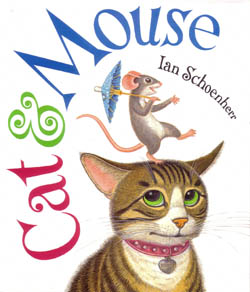
Cat & Mouse
written/illus. by Ian Schoenherr, (Greenwillow Books, 2008), 40p, Ages 2-4
Best friends, cat and mouse love a good romp. To the words of loosely adapted nursery rhymes, "Hickory, Dickory, Dock", "Eeny, Meeny, Mo", and "I Love a Little Kitty", they chase each other up a grandfather clock, encounter its mechanical cuckoo bird, play tricks, tease, and enjoy taunting each other. Always in good fun, Mouse declares, "She'll sit by my side / And I'll give her some food / And Kitty will love me / Because I am good." Preschoolers will love the saucer-eyed cat and the mischievous, pink-eared, little mouse having fun together.
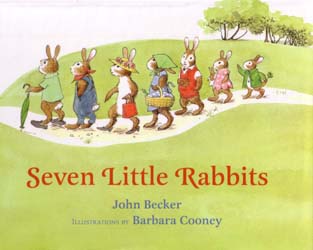
Seven Little Rabbits
written by John Becker, illus. by Barbara Cooney, (Walker Books, 2007), 32p, Ages 2-6
Repetition and rhyme invite children to count their way to sleep. Seven rabbits walk down the road to visit their friend toad. One by one, they become tired, turn around, and take a nap at mole's hole. "Then / The seventh little rabbit / Went to sleep— / Shh, don't say 'Peep"— / He's tucked in bed / And now, instead, / There are . . . / Six little rabbits / Walkin' down the road / Walkin' down the road / Six little rabbits / Walkin' down the road / To call on old friend toad." Originally published in 1973, the repetitive verses may please young children, however, adults may find themselves nodding off before the children.

The Clock Struck One: A Time-Telling Tale
written by Trudy Harris, illus. by Carrie Hartman, (Millbrook Press, 2009), 32p, Ages 4+
Expanding on the famous nursery rhyme, "Hickory Dickory Dock," when the clock strikes two, the cat awakes and chases the mouse for a twelve-hour romp through the house and out to the barnyard where the dog and hen join the chase. "Hickory, dickory dix, / the clock on the barn said SIX. / A hen joined the group where they charged through the coop / and frightened her new little chicks." Humans join in the pursuit until all collapse at midnight. Endpapers explain facts about clocks and basic information on telling time. Children are challenged to search for the various clocks (pocket watch, grandfather clock, stove timer, alarm clock, etc.) featured throughout the story. Humorous rhymes, illustrations, and an introduction to telling time will keep little ones entertained.

The Camel's Lament
written by Charles Edward Carryl, illus. by Charles Santore, (Random House, 2004), 32p, Ages 3-6
Poor camel compares his life to others in the animal kingdom and concludes that many of the animals are held in higher esteem. "Puppies are able to sleep in a stable / and oysters can slumber in pails. / But no one supposes a poor camel dozes — / anyplace does for me!" This 19th century poem is a comical take off on the theme of "the grass is greener." Santore's illustrations are as usual outstanding.

Over in Austrailia: Amazing Animals Down Under
written by Marianne Berkes, illus. by Jill Dubin, (Dawn Publications, 2011), 32p, Ages 4-8
Continuing her series of wildlife books based on the tune "Over in the Meadow," Australian animals from one to ten snap, hop, munch, splash, cit, dig, lap, dance, slurp, and zig to a rhythmic tune about each animal. "Over in Australia / In a sandy place to dine / Lived a hungry, long-eared bilby / And her little joeys nine. / 'Slurp,' said the mother. / 'We slurp,' said the nine. / So they slurped and they burped / In a sandy place to dine." Endpapers contain animal facts and fiction on the crocodile, wallaby, koala, platypus, chick, wombat, sugar glides, brolga, bilby, and emu. Creative ideas from the author and illustrator are included along with an illustrated map of Australia, internet resources, and music from "Over in Australia."
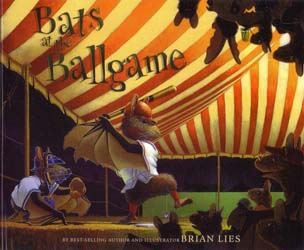
Bats at the Ballgame
written/illus. by Brian Lies, (Houghton Mifflin Books, 2010), 32p, Ages 4-8
The bats from Bats at the Beach and Bats at the Library are back and ready for night baseball including mothdogs, cricket Jack, beenuts, and upside down spectators. As the sun sets, bats, carrying their young, fly into a closed amusement park to watch their favorite team play ball under a circus tent. "We show our tickets, find our places, / watch the grounds crew lay the bases. / They roll the foul lines, rake the mound, / shape the field, and smooth the ground." As the game begins, players swoop, glide, streak around the field, strike out, miss catches, and slide into home to score. When the sun rises, they speed away to discuss the great game and dream of other wonderful baseball bat nights. The illustrations are stunning, and kids will love this bat-filled nocturnal sports world.
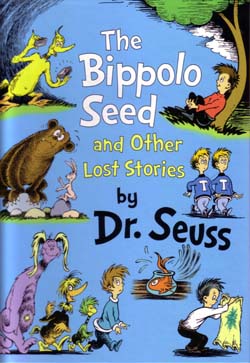
The Bippolo Seed and Other Lost Stories
written/illus by Dr. Seuss, (Random House, 2011), 68p, Ages 6-9
Seven stories, originally published in the early 1950's and largely forgotten, come alive again in a marvelous Dr. Seuss collection, highlighting his mastery of rhythm, rhyme, exaggeration, and moral messages. They include "The Bippolo Seed" (greed), "The Rabbit, the Bear, and the Zinniga-Zanniga" (ingenuity), "Gustav, the Goldfish" (excessive indulgence), "Tadd and Todd" (being different), "Steak for Supper" (the power of words), "The Strange Shirt Spot (behavior and consequences), and "The Great Henry McBride" (the importance of imagination and dreaming). An introduction by collector Charles D. Cohen explains why Dr. Seuss used the sounds of words to motivate children to read, and traces the history of these stories and their recurring themes in other Seuss books.
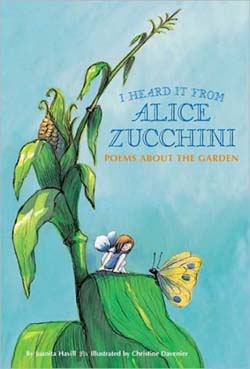
I Heard it from ALice Zucchini
written by Juanita Havill, illus. by Christine Davenier, (Chronicle Books, 2006), 32p, Ages 6+
Twenty delightful storytelling poems celebrate the world of the garden. Viewed from the ground level perspective of mice, snails, crickets, and a young fairy, children will enjoy the rhythmic stories and lovely illustrations. "I heard it from Alice Zucchini. / I wonder what the neighbors will say. / Max Bean said a bad word at recess, / so bad that Ms. Spinach turned gray." A King and Queen beetles lose their home when their Rhubarb Forest is baked in a pie. An elegant gentleman bee wishes to marry the flower Sweet Cicely. From vegetables and rodents to summer storms and fairy tale pumpkins, the poems are arranged in seasonal order with a table of contents.
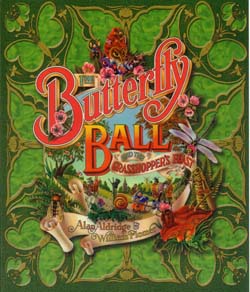
The Butterfly Ball and the Grasshopper's Feast
written by William Plomer, illus. by Alan Aldridge, (Templar Books, 2009), 96p, Ages 8+
Forest animals prepare and travel to a magnificent ball given by butterflies and grasshoppers. Creatures with human-like attributes in Victorian-style clothing fly, creep, hop, and walk to the ball, being careful to stay away from the hornets and wasps. "From their sharp front teeth to the tips of their tails / The Rodents were thrilled by their trip on the rails / In a Midland express with the Princess of Wales." Children will enjoy wadding through frog's water bogged house, playing cricket with the snails, dodging the hornets and wasps, and riding the train with the dangerous, crafty fox. Originally published in 1973 and awarded the Whitbread Children's Book Award, this new edition includes detailed notes on each creature by wildlife expert Richard Fitter.
The Children's Hour was created to promote and encourage reading to children. We believe that reading aloud not only creates a special bond between parents and children, but it is important to the development of their imagination and curiosity. Our books are also great choices for children to read.
The Children's Hour
150 N. Santa Anita Ave.,
Suite 300
Arcadia, CA 91006
626-791-4848
Conditions of Use
Privacy Policy
